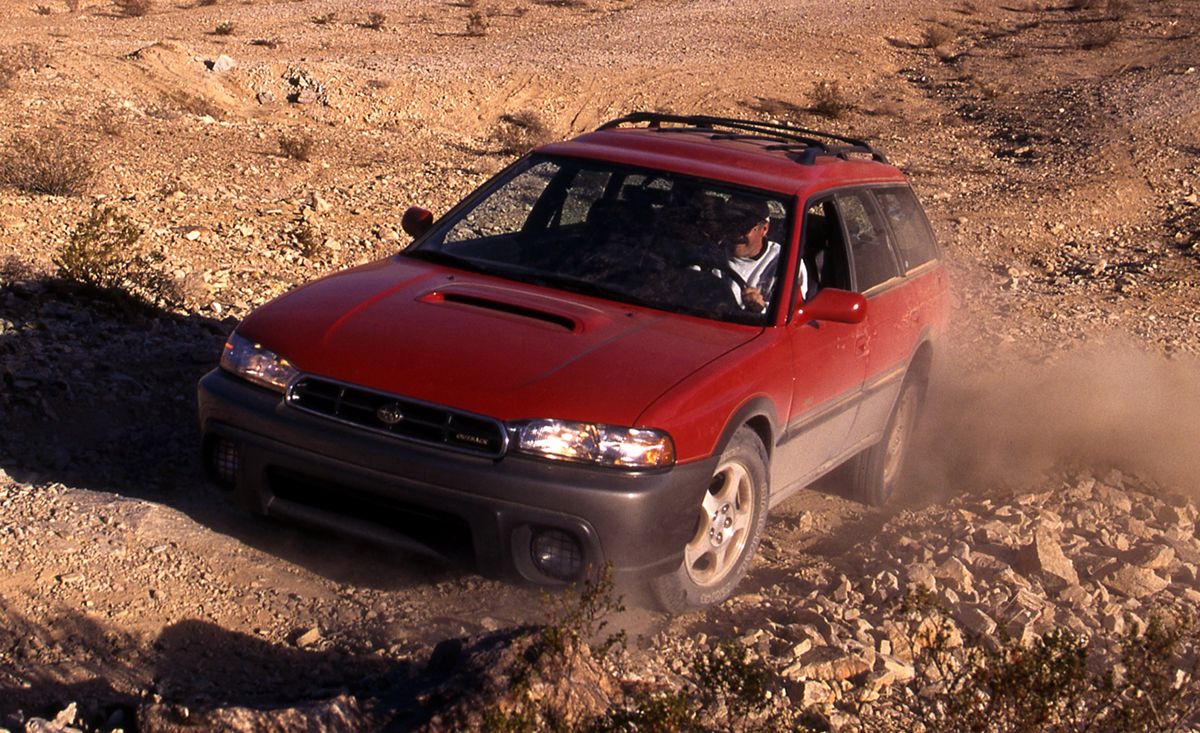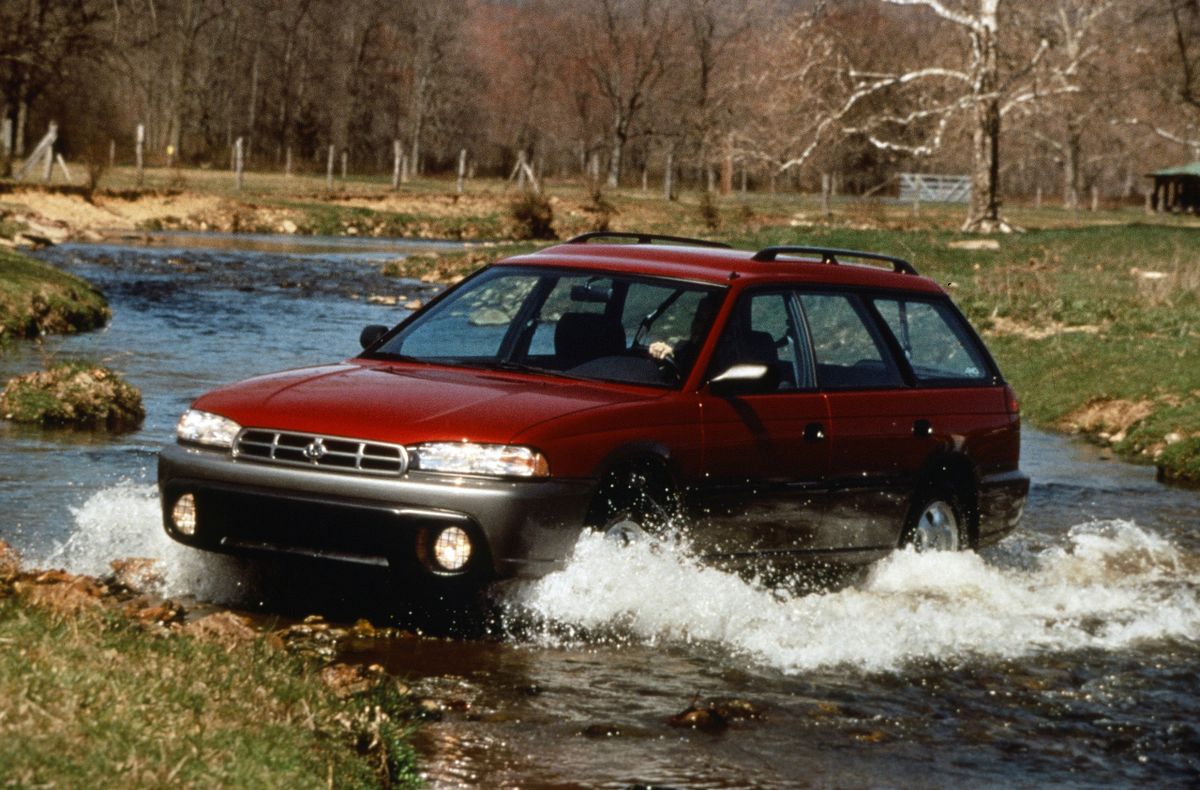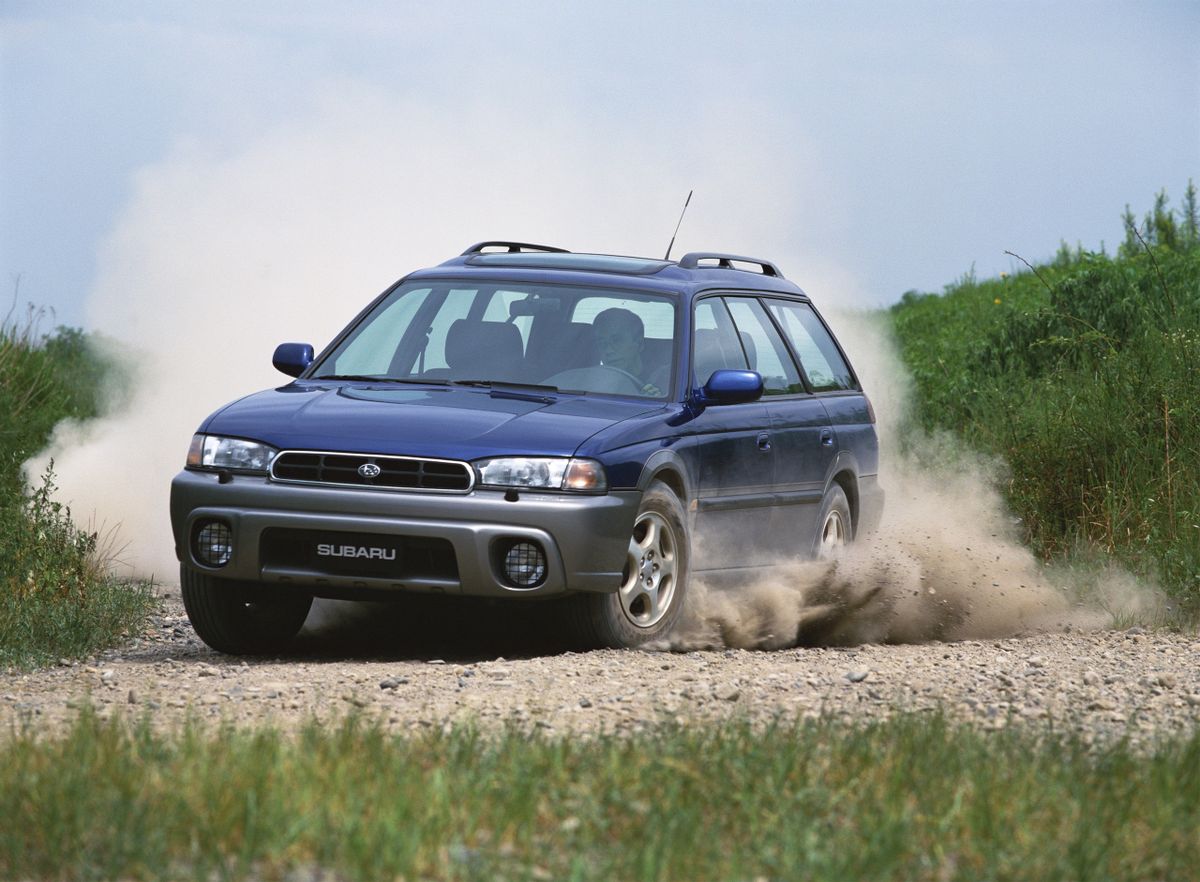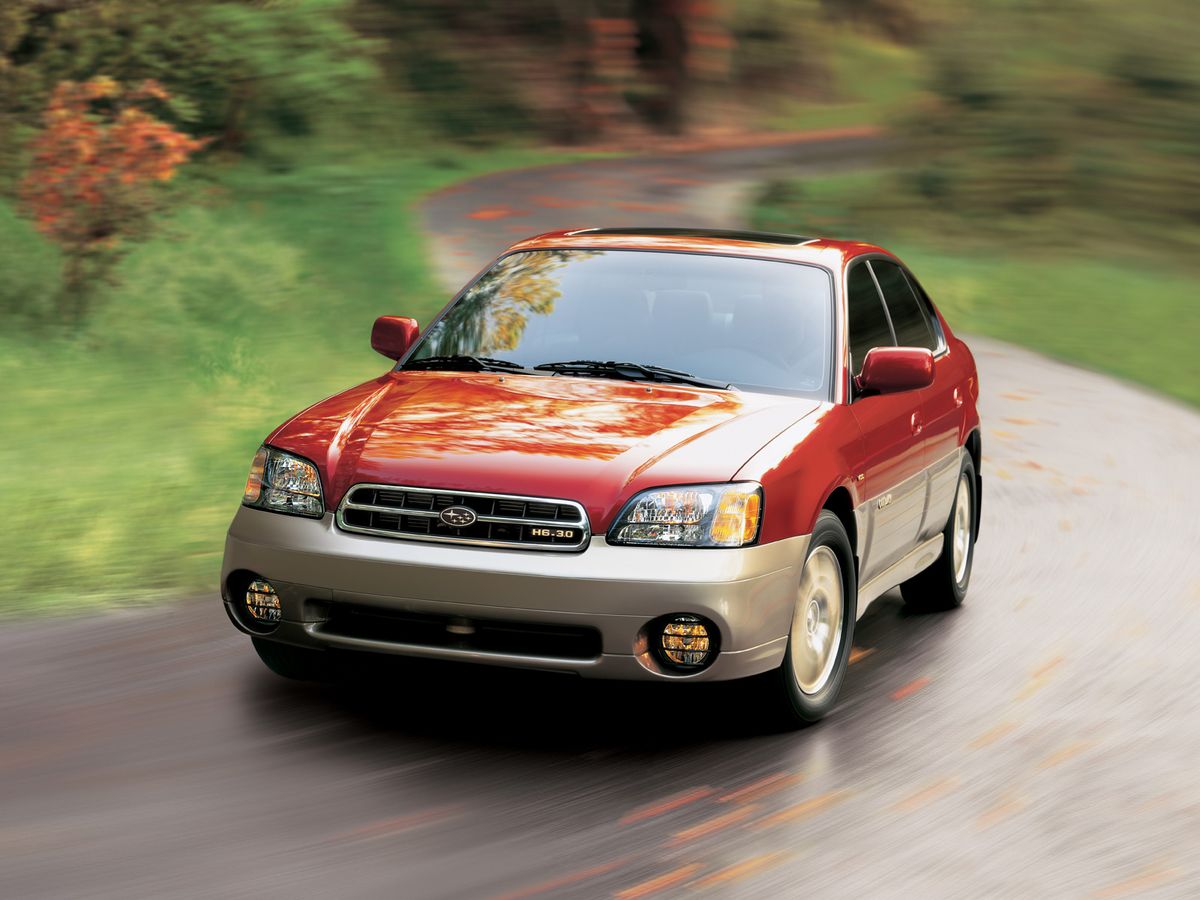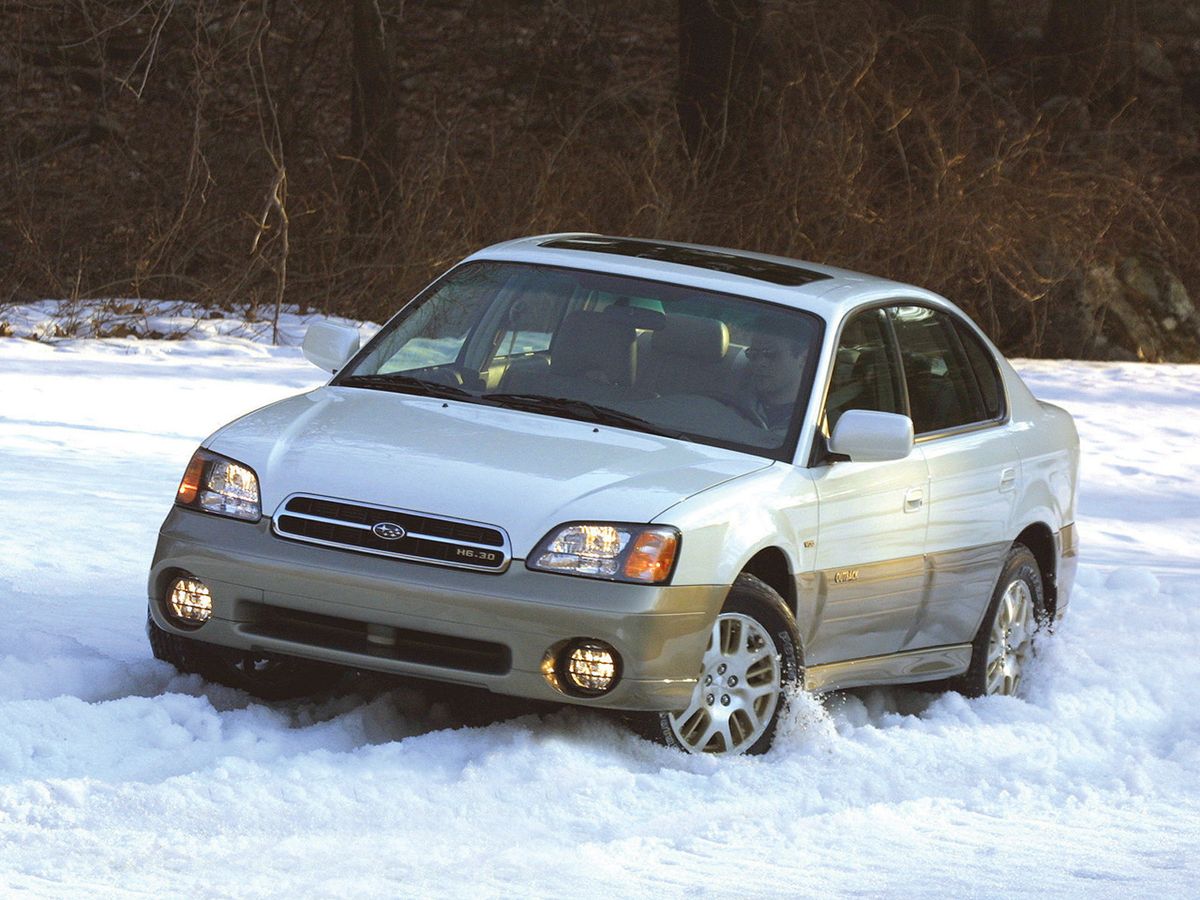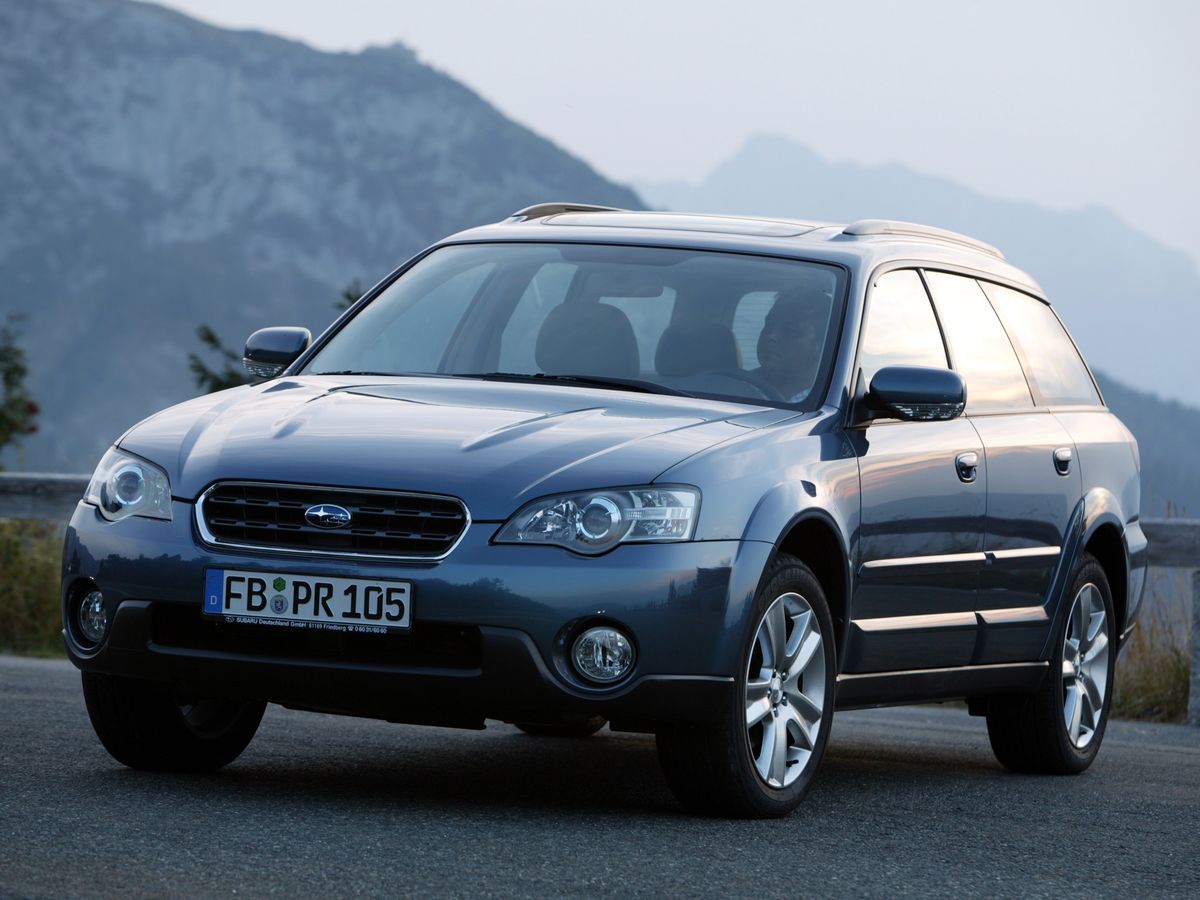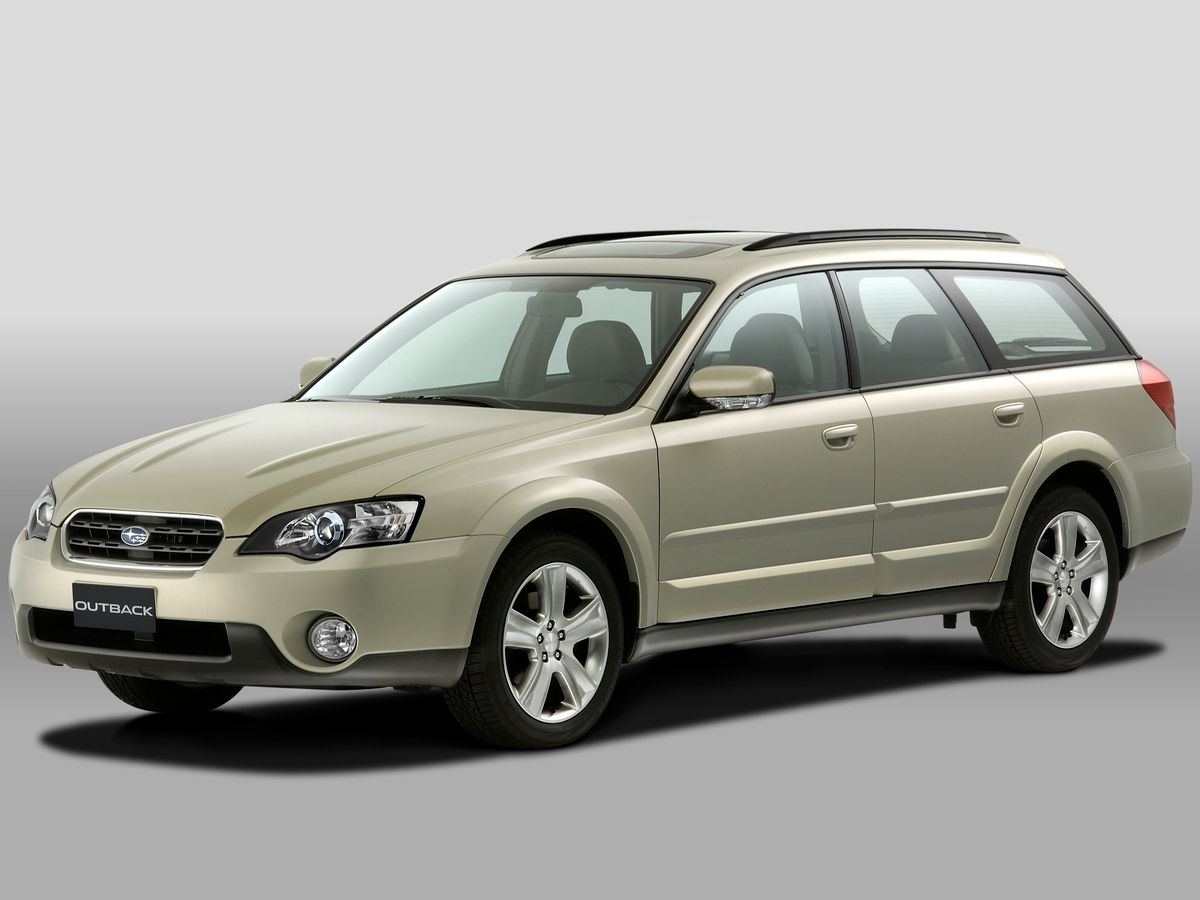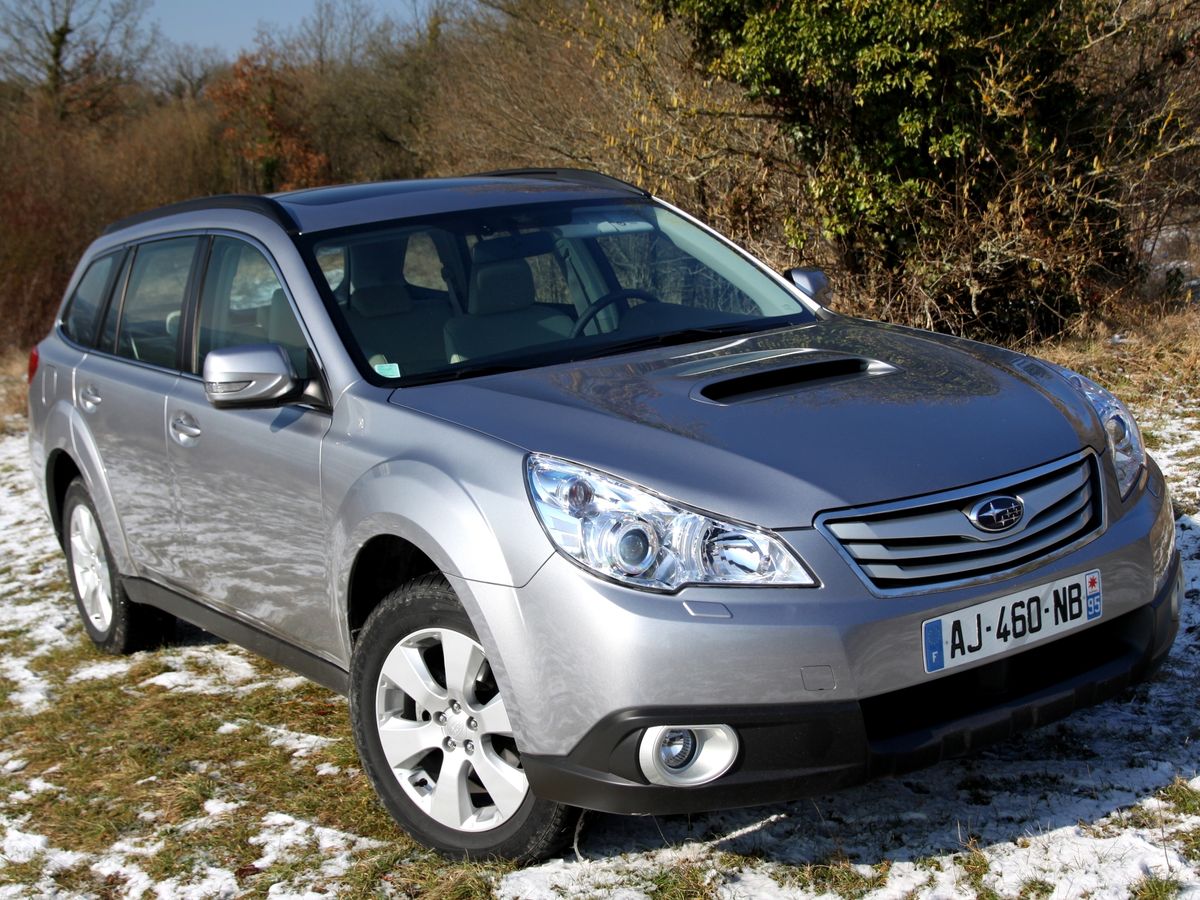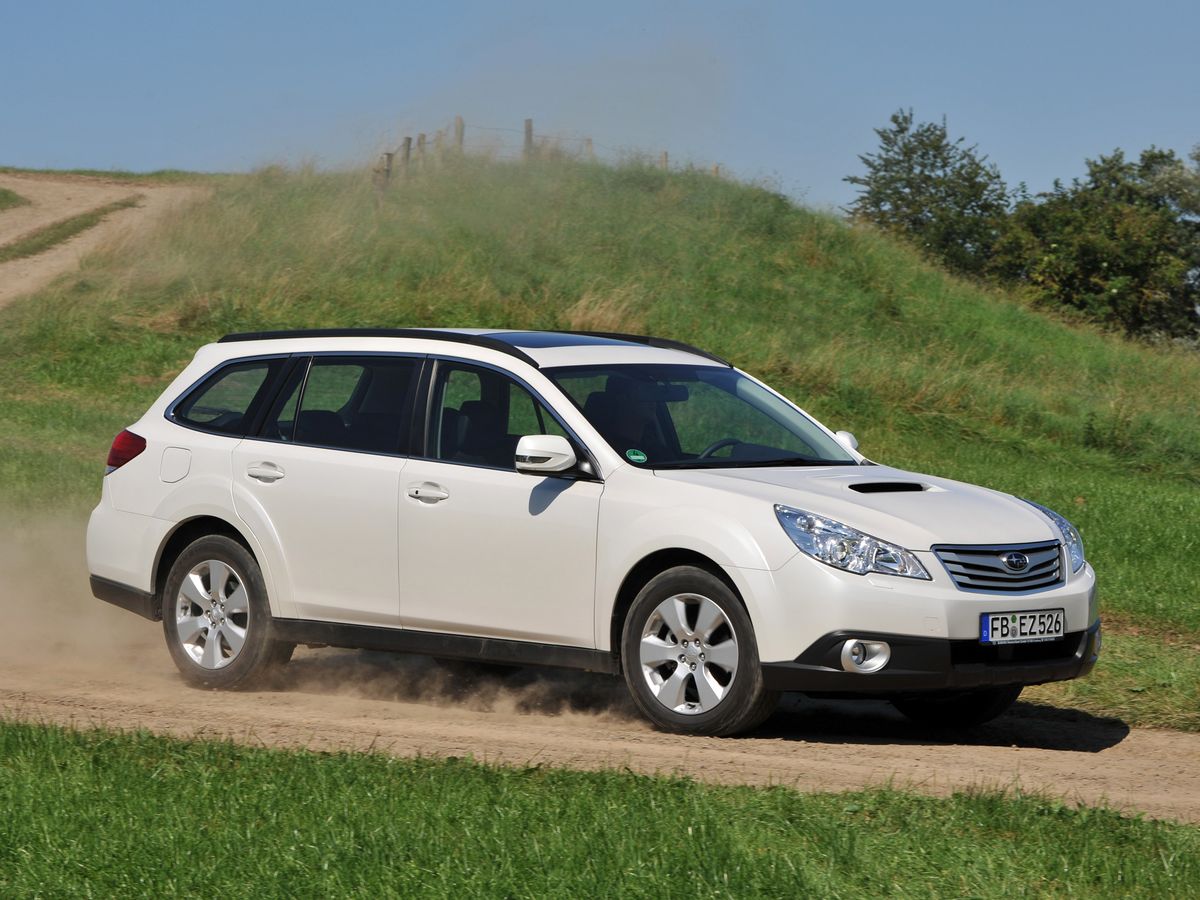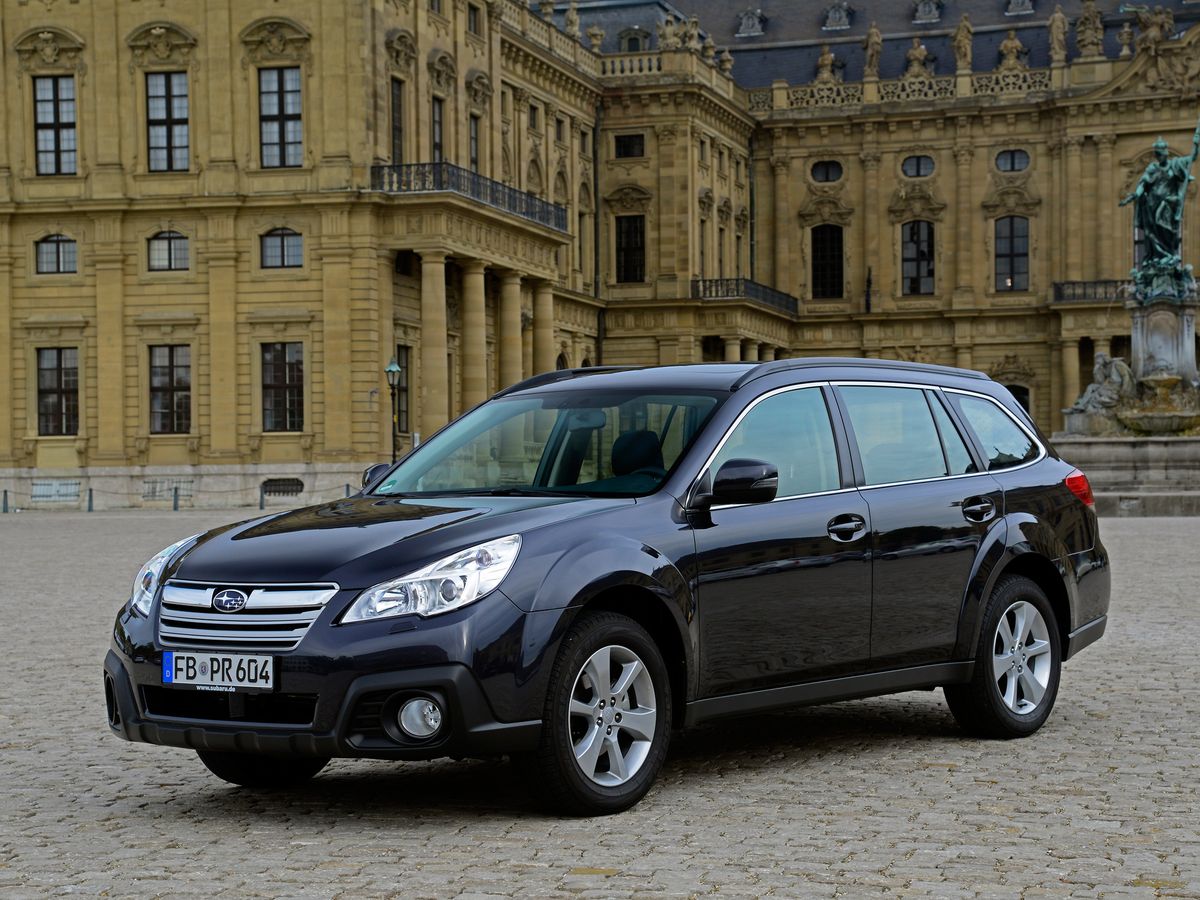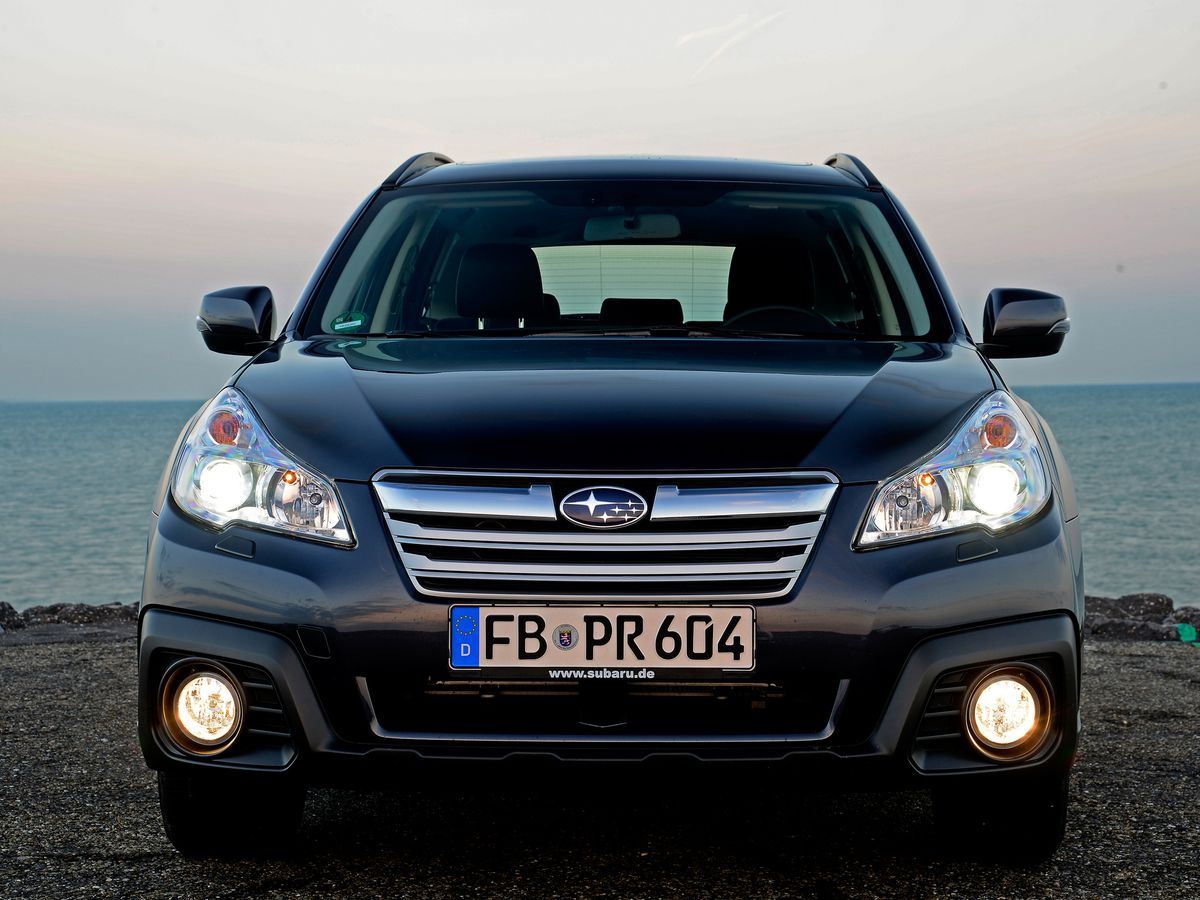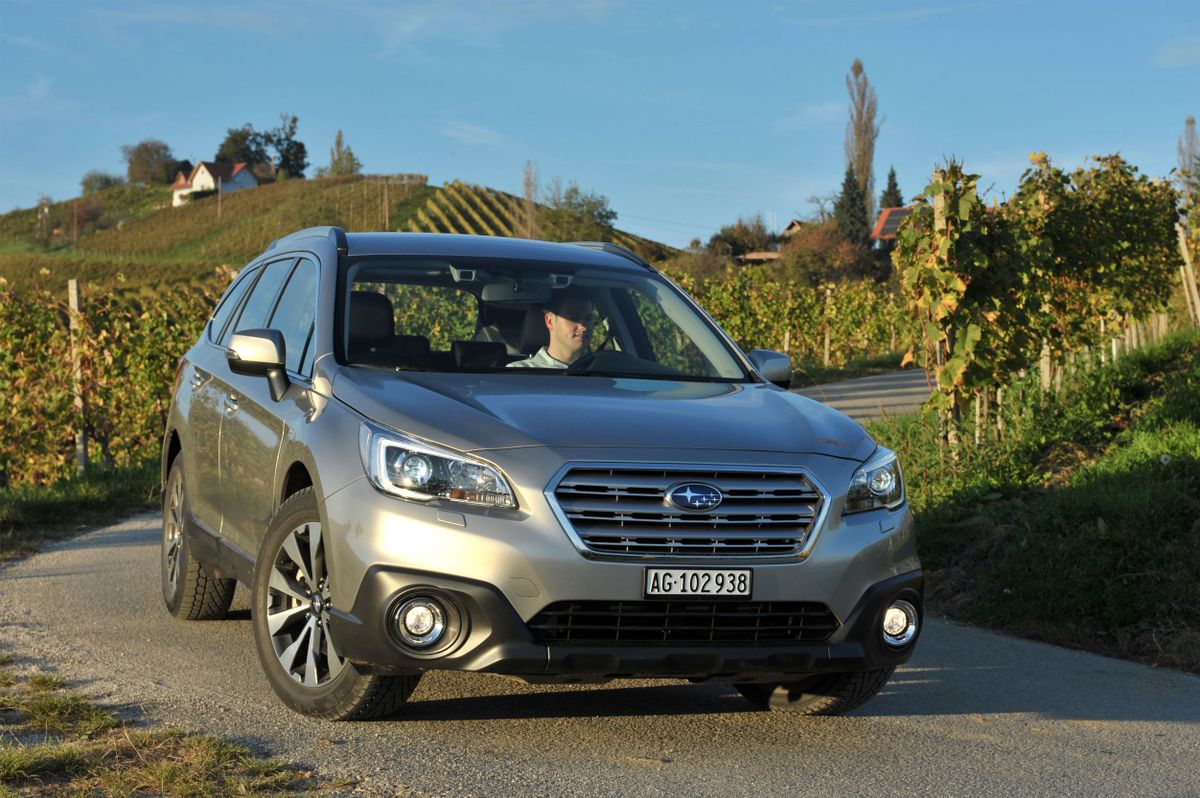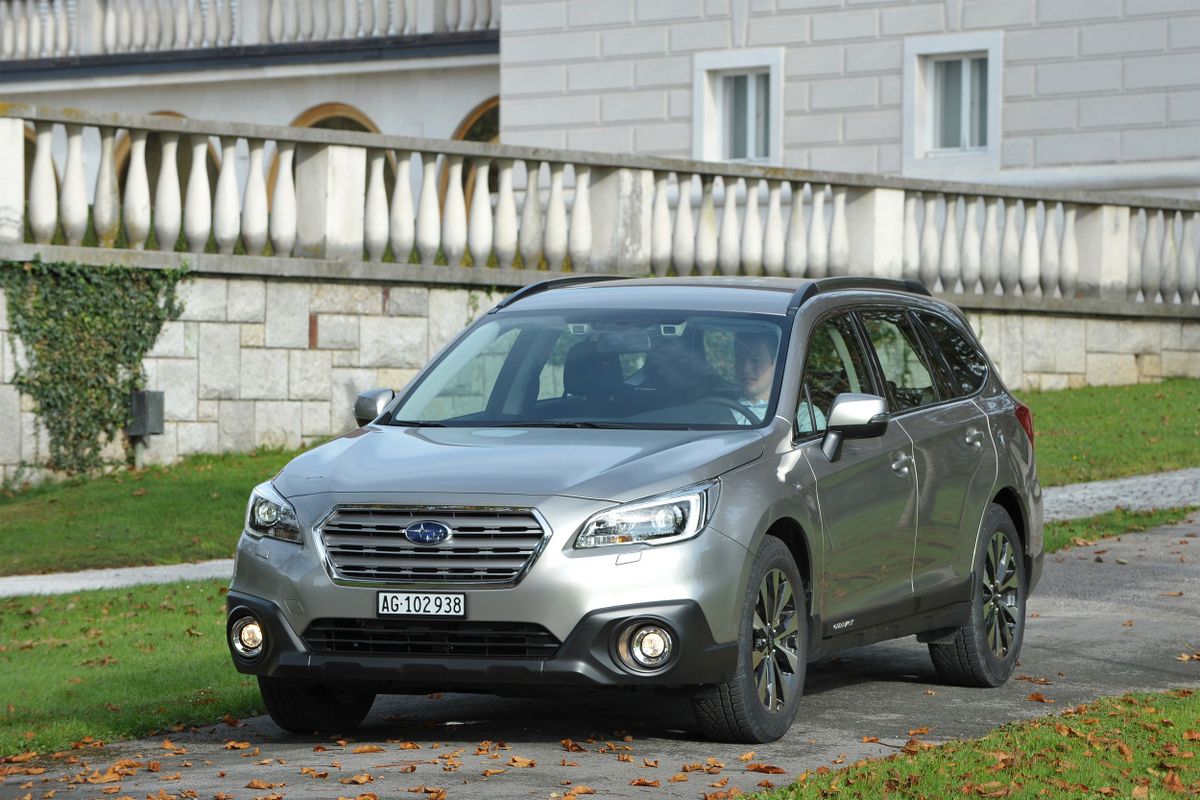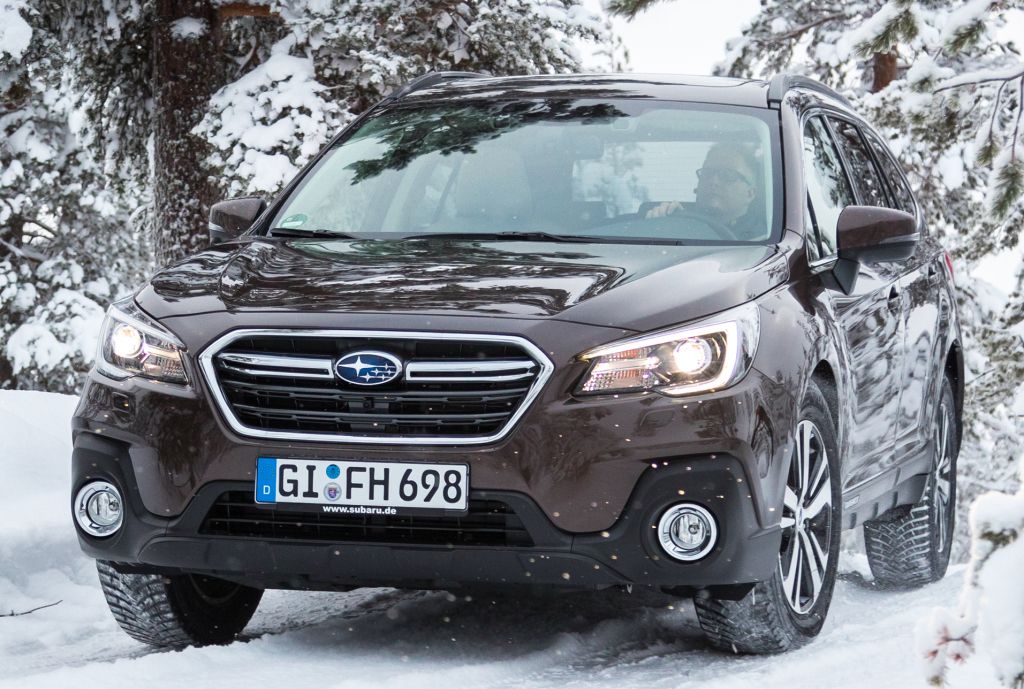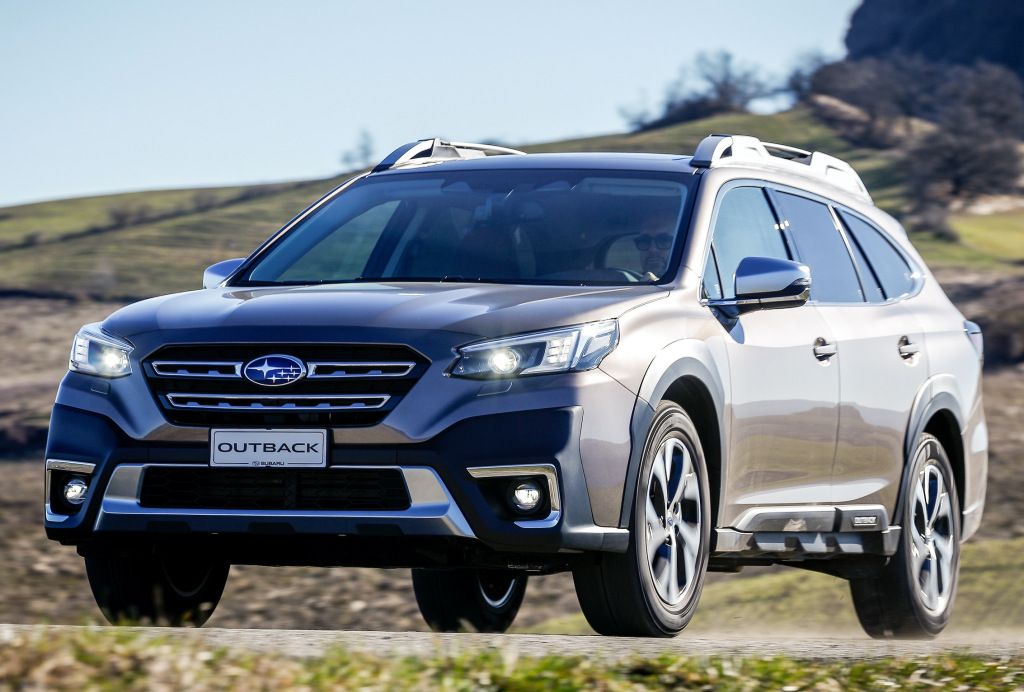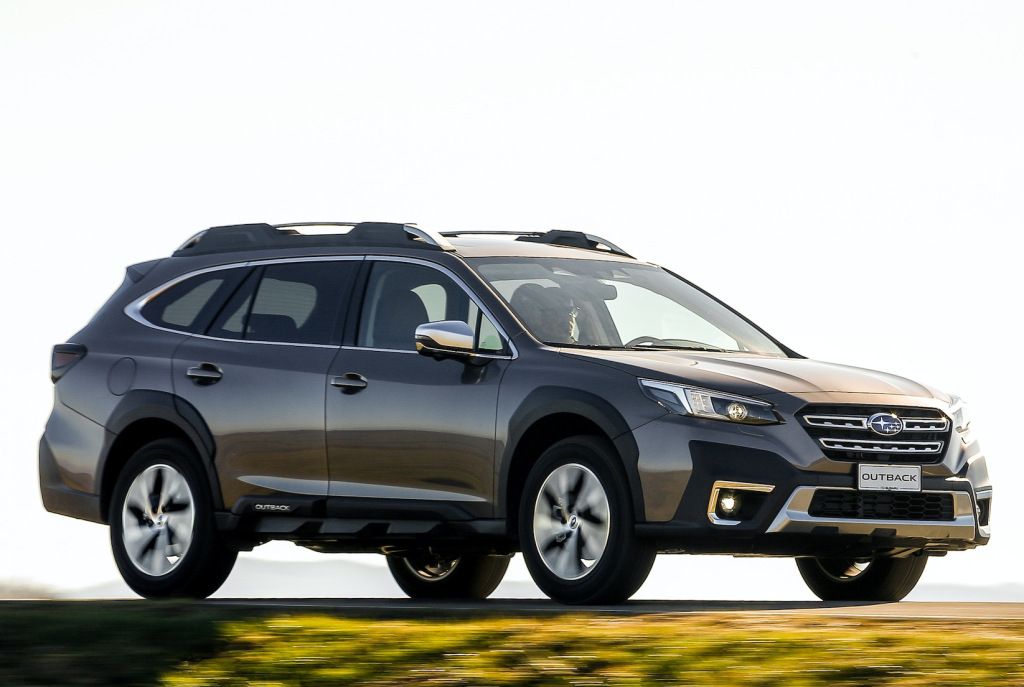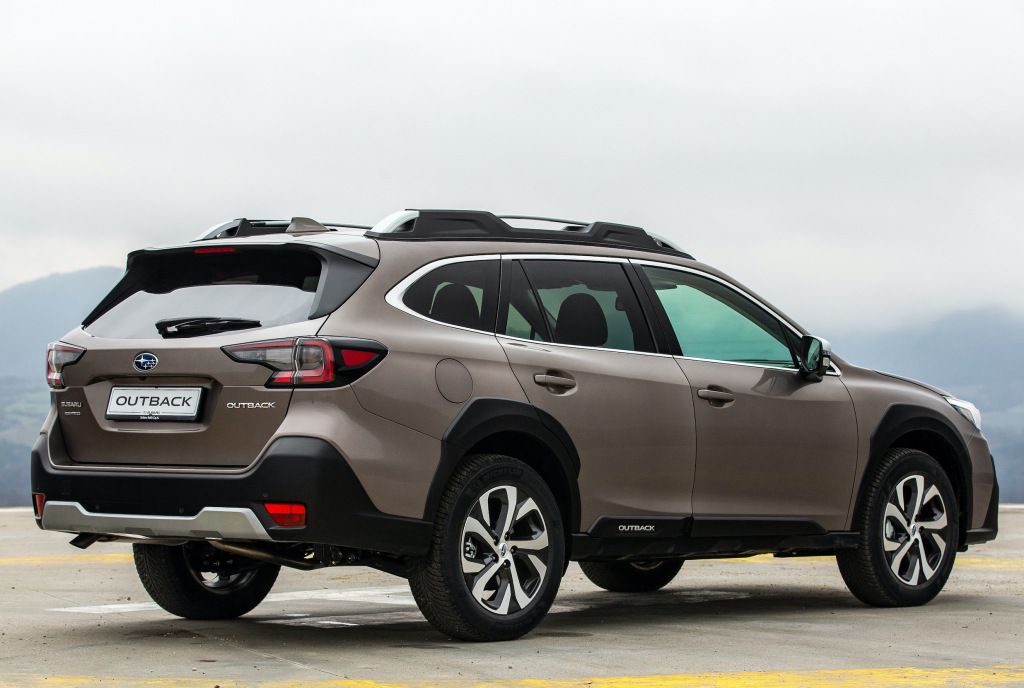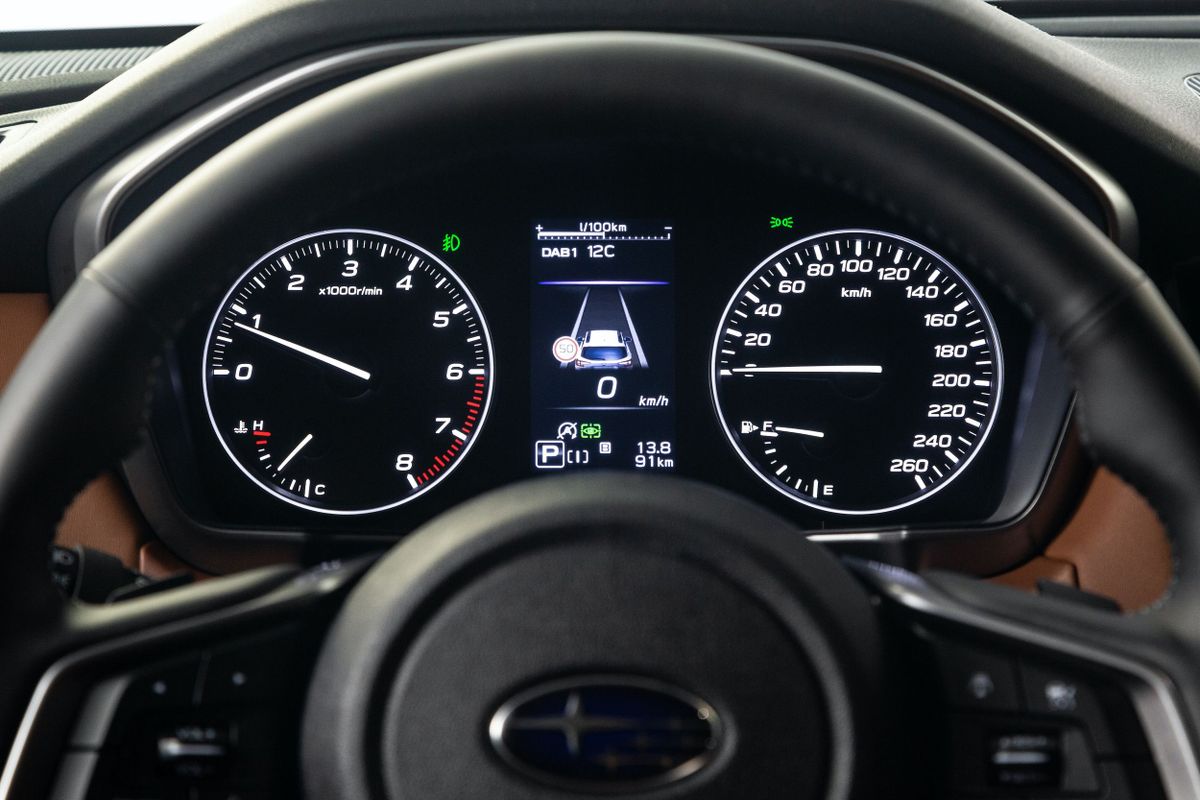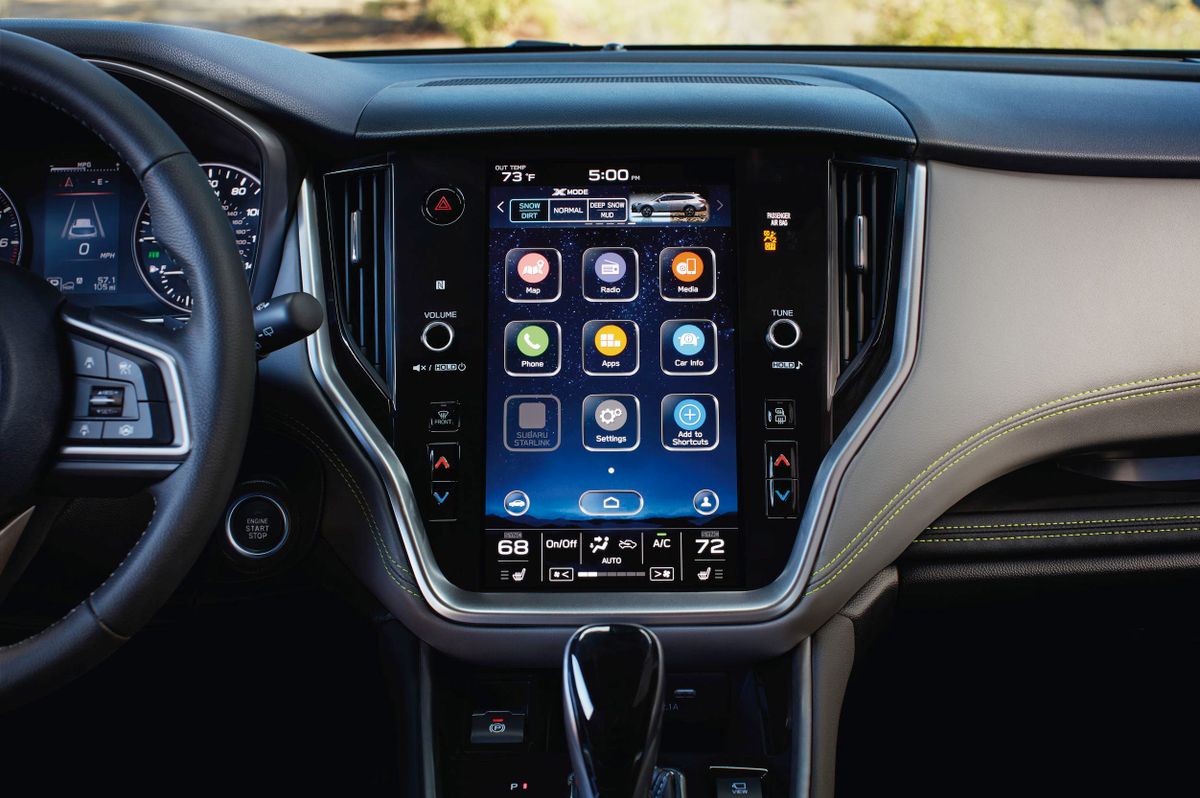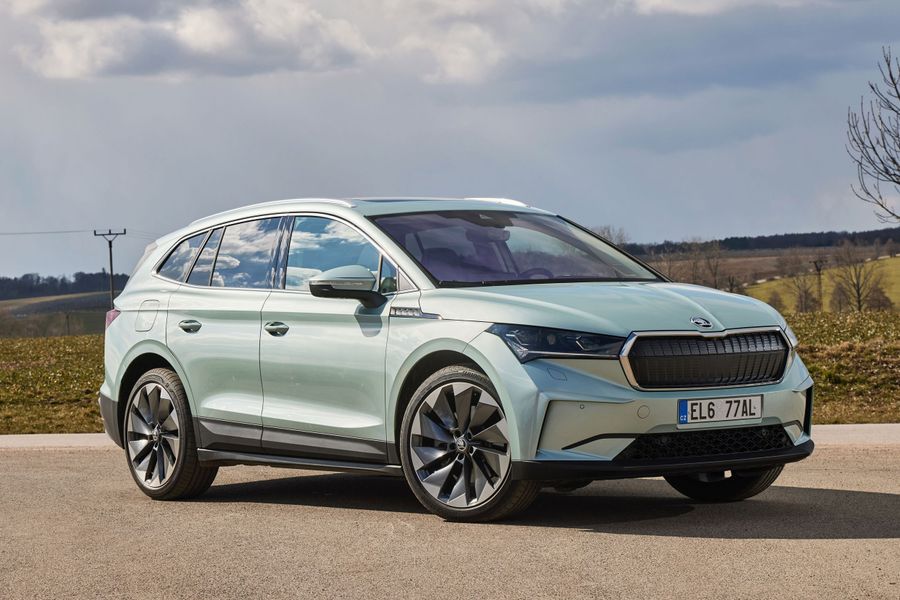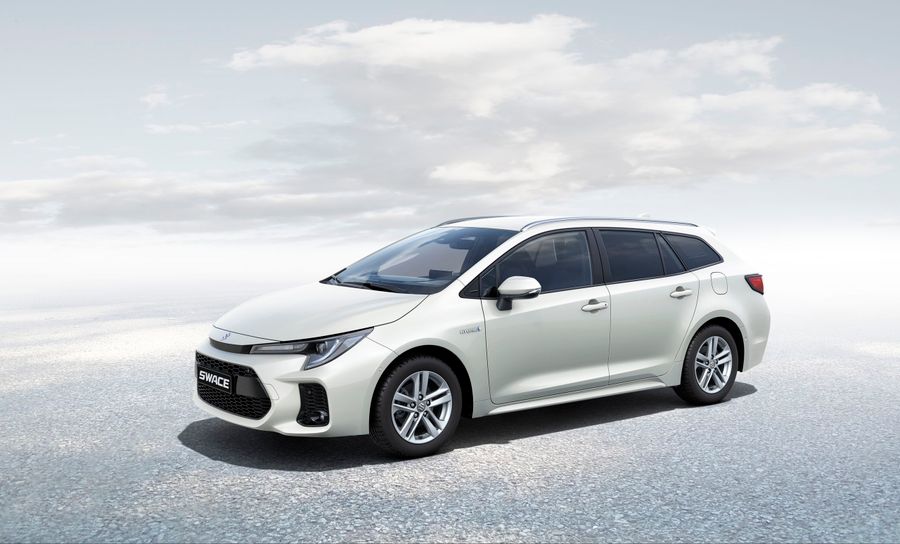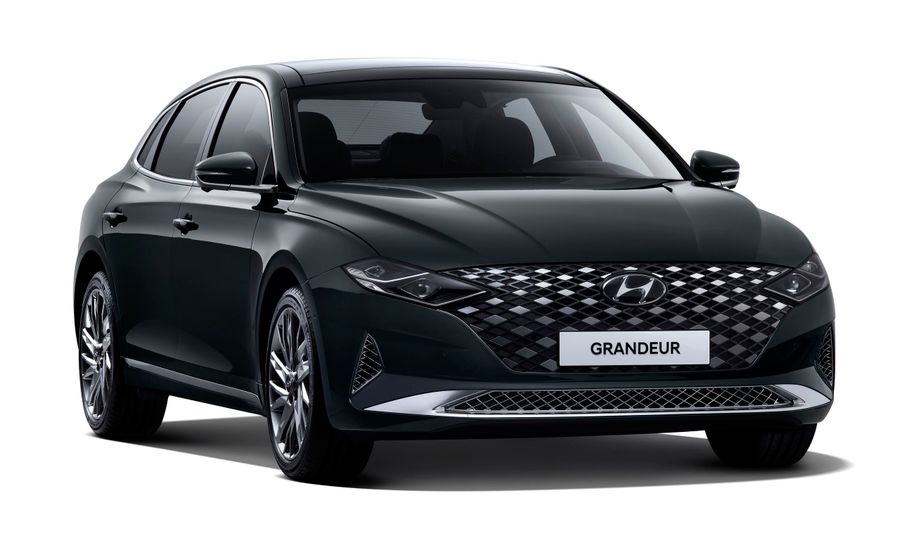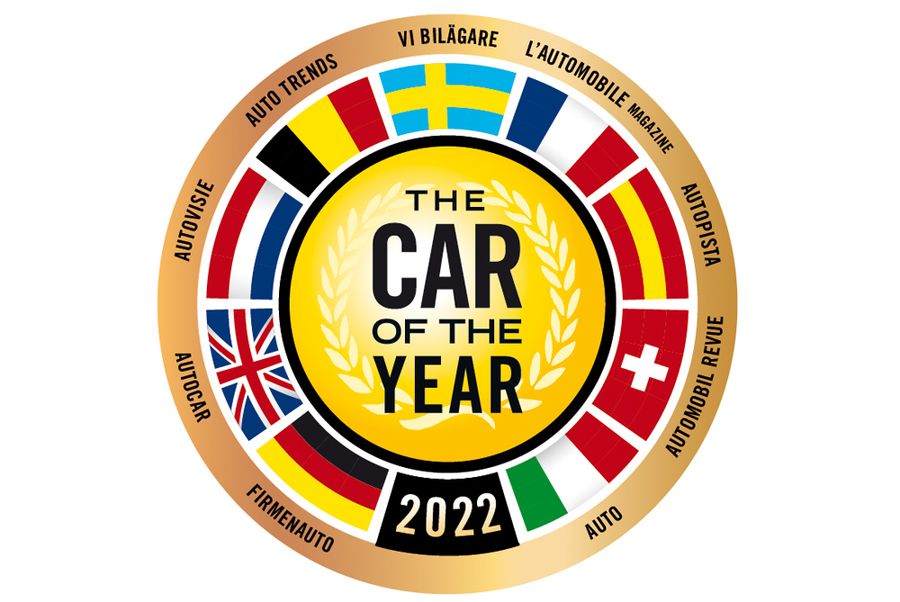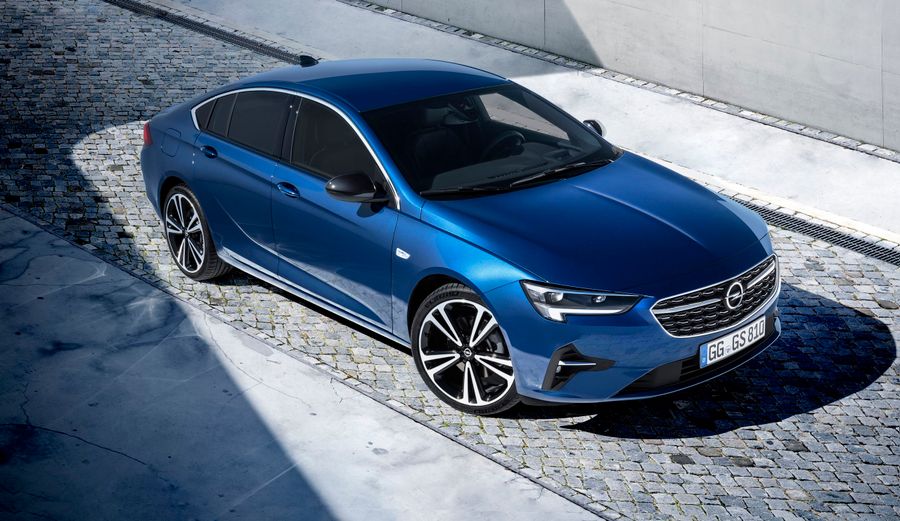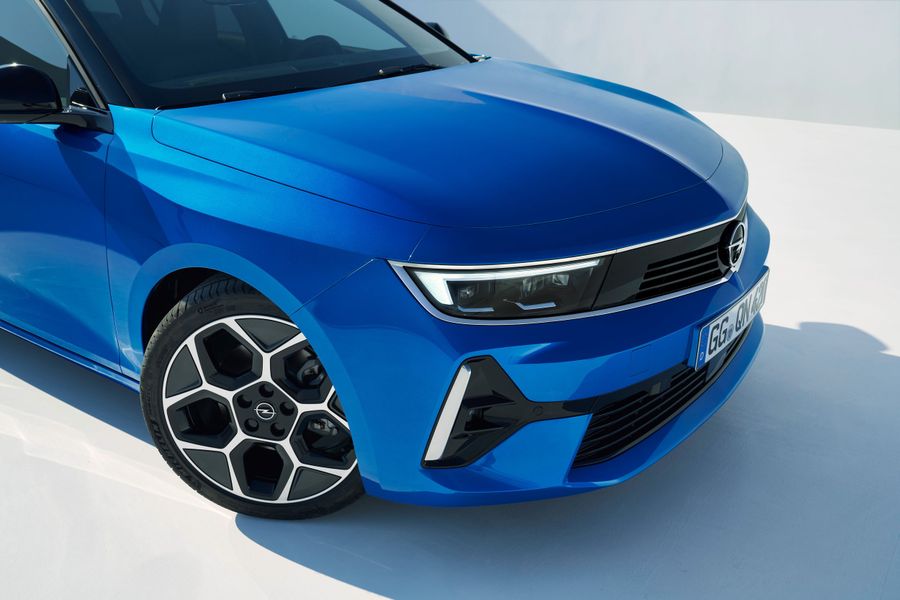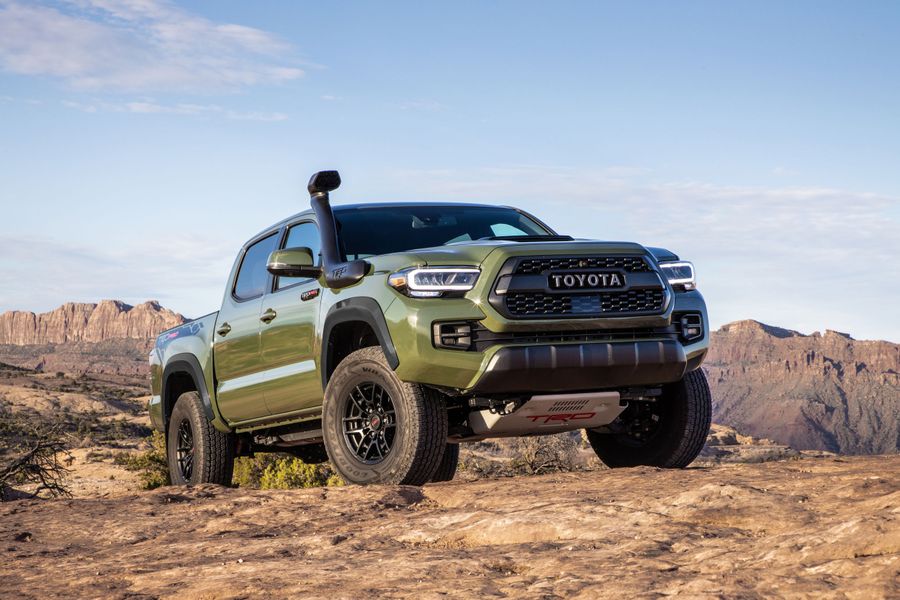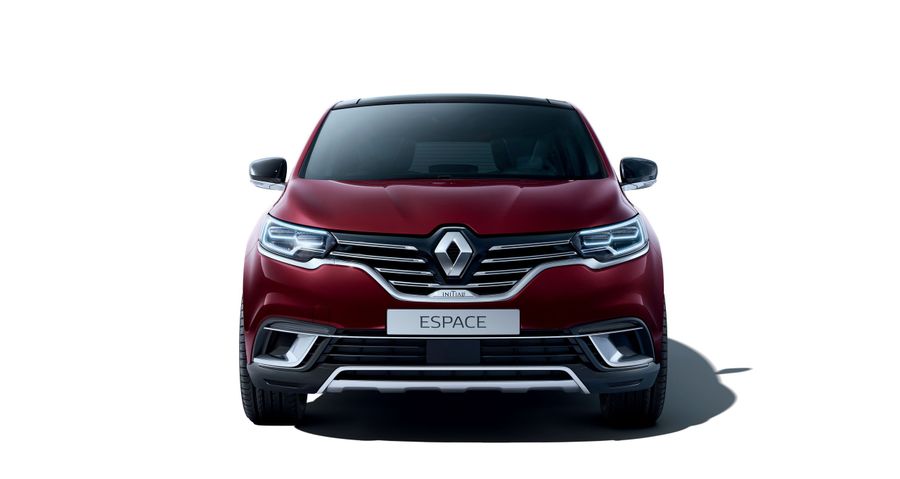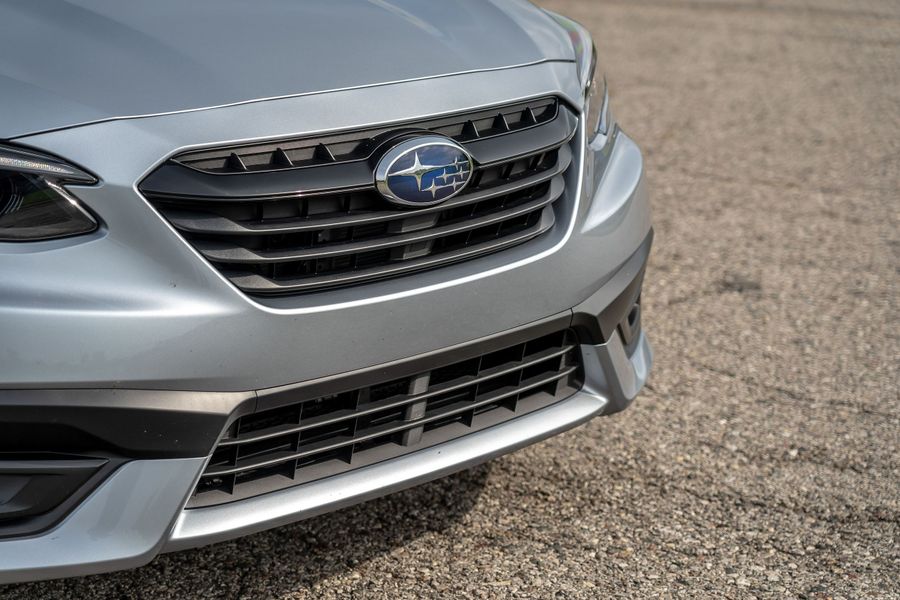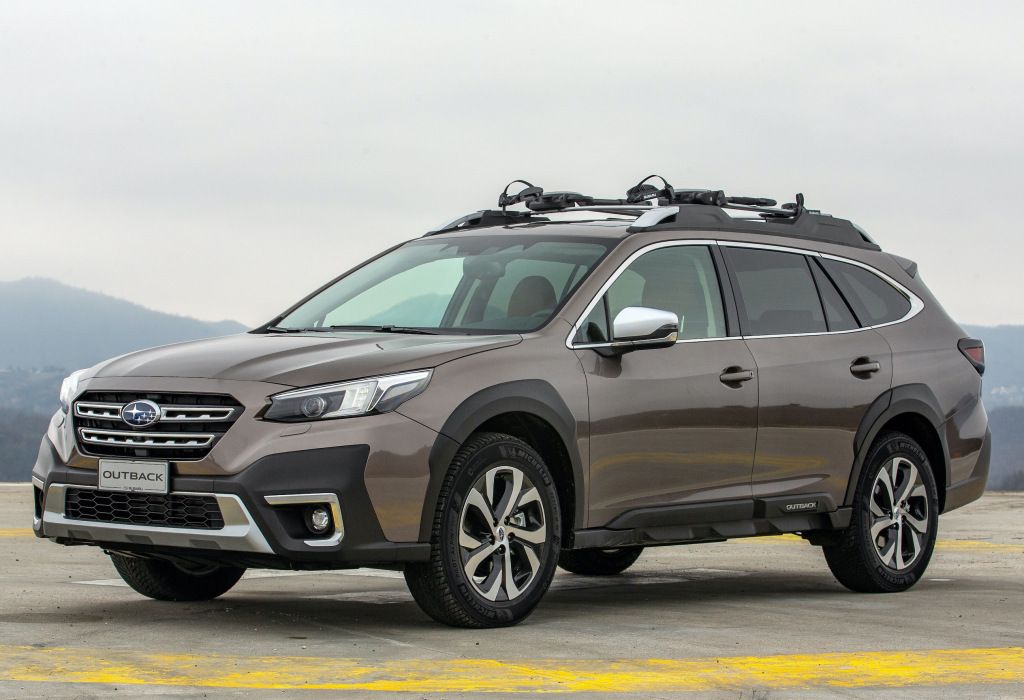
For all occasions and roads
The Subaru Outback is a five-seater off-road estate produced by Subaru (Japan) since 1994. Currently, Israeli buyers can purchase the fifth generation of the car after the restyling in 2017. In 2019, the manufacturer presented the future sixth generation (as of 2021). The Outback is one of the models with a long history that enjoys popularity around the world.
The first generation
It was produced from 1994 to 1998. The Subaru Outback was introduced in 1994 as an off-road version of the second generation Subaru Legacy. The car’s exterior was designed by the French designer Oliver Bowley, who tried to make the passenger car look like an SUV.
The car was distinguished by its ‘off-road’ bumpers, front bumpers with large fog lights protected by a mesh, two-tone body paint, larger tires and thick roof rails. The ground clearance was 200 mm, 65 mm higher than that of the original model, which made it possible to travel by forest roads, thus justifying the name of the estate. The car had a very comfortable passenger compartment, as well as a huge trunk: 488 liters (or 1710 liters with the rear seats folded down). The car was not small, as the body length was 4,720 mm, while the wheelbase was 2,630 mm.
The car was powered by a 2.5-liter horizontally opposed-four engine. It had a four-wheel drive system of two different types. So, in combination with an automatic transmission, the cars were equipped with AWD with electronic control, where 90% of the torque was transmitted to the front axle and 10% to the rear axle, while the electronics effectively monitored the power transfer along the axles, and when reverse gear or first gear was engaged the torque was transmitted symmetrically. Models with a manual transmission had permanent all-wheel drive with 50/50 torque distribution and self-locking differentials to redistribute power between the axles and from one rear wheel to the other (with a rear limited slip differential).
The word ‘Outback’ means ‘wilderness’ or ‘uninhabited land’
The estate is equipped with an independent suspension: the MacPherson strut in front and a multi-link suspension at the rear, and both of them had large travels. This car was great for traveling or for those living outside the city. The disadvantages of the first generation model, produced until August 1998, were expensive maintenance, long overhangs and high fuel consumption.
The second generation
It was produced from 1998 to 2003. The all-wheel drive Subaru Outback of the second generation was equipped with a 3-liter 6-cylinder engine and larger headlights, had a different design of the body sidewalls, slightly different size, a trunk with a volume ranged from 528 to 1,646 liters, a comfortable interior and a high equipment level.
As standard, the car was supplied with a 2.5-liter horizontally opposed-four engine (with a manual or automatic transmission) or a 3-liter six-cylinder engine and an automatic transmission. The engines were dynamic and quite reliable, but demanded the oil of a particular quality.
The car’s suspension was the same. The chassis was distinguished by balanced tuning, which equally ensured a comfortable ride and steering response. The all-wheel drive scheme depended on the engine and the type of transmission. For example, under normal conditions, the traction was distributed in a ratio of 45/55 to the front and rear axles, and when the wheels slipped, the system reduced the traction to the slipping wheel and directed it to the opposite wheel. Working in conjunction with the Electronic Stability Control, the electronics could brake any of the wheels, simulating a cross-axle differential lock.
The equipment was still superb, including an electric driver’s seat, a leather steering wheel, a dividing armrest at the rear, as well as a VDC (Vehicle Dynamic Control) system, which took into account the readings of many sensors (engine speed, wheel speed, steering angle) and constantly tracked the trajectory movement, not allowing the car to spin when driving in difficult conditions.
The third generation
It was produced from 2003 to 2006, while its restyling took place in 2006. The third Outback was equipped with 2.5-liter and 3.0-liter naturally aspirated engines and permanent all-wheel drive. The three-liter engine produced 245 hp (torque of 297 Nm) and was paired with a 5-speed automatic transmission with sport and manual modes. The basic versions were equipped with a 2.5-liter 165 hp engine (225 Nm) and a 5-speed manual transmission or a 4-speed automatic transmission. The suspension was the same as before, but became tighter. The car became bigger: 4.8 m long, 1,770 mm wide and 1,545 mm high. The wheelbase was 2,670 mm. The ground clearance was 200 mm. The trunk reached 459/1628 l. Basic trim levels included all the previous options, plus climate control, CD-receiver. The ABS acquired an electronic brake force distribution system.
After the restyling in 2006, the Outback acquired a 2-liter diesel engine. The Legacy and Outback were the world’s first cars to be equipped with a boxer diesel engine (with 150 hp at 3,800 rpm and a torque of 350 Nm at 1,800 rpm) with the fuel consumption of only 7.1 liters in the city and 5.1 liters on the highway, which was 30 percent less as compared to the gasoline engine. The list of options featured the SI-Drive system, which allowed the driver to choose one of three driving modes: Intelligent (fuel-efficient), Sport and Sport Sharp.
The fourth generation
It was produced from 2009 to 2015, while its restyling took place in 2012. The fourth Subaru Outback became bigger in terms of its wheelbase (from 2,670 to 2,745 mm) and dimensions: by 5 cm width-wise, 8 cm height-wise and 6.5 cm length-wise. The estate could still boast of a great steering response on any road, strong suspension and a large trunk (526/1,726 liters). The car was equipped with the retuned suspension and a CVT.
The estate acquired a powerful version of the 3.6 liter engine with a 5-speed automatic transmission and a free asymmetric differential, which divided traction in a ratio of 45:55 in favor of the rear wheels. The car had three all-wheel drive systems at once. For example, a 2.5-liter engine car with a manual transmission was equipped with a viscous-coupling limited-slip center differential. Plus, there was a CVT, a system of electronic all-wheel drive, where the torque distribution was controlled by electronics.
The list of standard equipment became even longer: dual-zone climate control, xenon headlights with washers, 10-way power-adjustable driver seat. The Outback was equipped with VDC, ABS with EBD and Brake Assist. After the restyling in 2013, the Subaru Outback boasted an improved interior, but lost the manual transmission modifications.
The fifth generation
It was produced from 2014 to 2019, while its restyling took place in 2017. The estate acquired a new design, improved visibility, and a larger wheelbase. The length and width of the body increased by 15 and 18 mm, respectively, and the ground clearance grew up to 220 mm. There were two engines: 2.5 liter (power - 175 hp, torque - 235 Nm, average fuel consumption - 7.7 l/100 km) and 3.6 liter (256 hp; 335 Nm; 9.9 liters/100 km). Both engines were equipped with Lineartronic CVTs.
The 2014/2015 Subaru Outback was equipped with a symmetrical all-wheel drive system with Active Torque Split electronic torque distribution. All the models acquired the X-Mode system, which regulated the operation of the engine, transmission and stabilization systems to improve the car’s cross-country ability, as well as the Active Torque Vectoring system that braked the front wheel, which turned out to be on the inside maneuver radius when turning. The chassis had a familiar scheme.
All the models acquired the X-Mode system, which regulated the operation of the engine, transmission and stabilization systems to improve the car’s cross-country ability, as well as the Active Torque Vectoring system that braked the front wheel, which turned out to be on the inside maneuver radius when turning.
The standard equipment of the car included LED headlights with retractable washers, dual-zone climate control, a modern multimedia system, seven airbags, ABS with EBD and Break Assist, and a BOS2 braking priority system. On the expensive trim levels, the Outback was equipped with a set of driver assistance systems: blind-spot object detection, lane change alert, reverse collision warning system, and an automatic high beam controller.
After the restyling in 2017, the Subaru Outback destined for the Japanese market underwent some changes, both cosmetic and technical, as well as functional. The new useful functions included an automatic reverse braking, as well as side and forward view cameras. Turning headlights and adaptive high beam also helped to increase safety.
The sixth generation
Announced in 2019, this car is expected to be released soon (as of 2021). The sixth Outback has been significantly upgraded: the rigidity of the body has increased by 70%, the interior has become more comfortable and spacious. The basic engine is still a 2.5 liter naturally aspirated four-cylinder engine (direct fuel injection; 185 hp; gasoline consumption ranges from 7.1 to 9 liters). The second engine is new and has a volume of 2.4 liters (turbo, 264 hp, consumption ranges from 7.8 to 10.2 liters). Both engines will work with the upgraded Lineartronic CVT, and the car can be all-wheel drive only.
The 2020 Subaru Outback is built on the modular SGP platform, borrowed from the latest generations of Impreza, XV, Forester, Ascent and Legacy. The suspension is fully independent: the MacPherson strut is in front and a double wishbone with subframe is at the rear. The length of the new estate is 4,860 mm, which is 37 mm longer than that of its predecessor. It is 1,840 wide and 1,675 mm high. The wheelbase is 2,745 mm, and the ground clearance is 213 mm. The trunk compartment (527 liters) can be easily expanded to 1,801 liters. A sensor has appeared at the rear door, and now you can open it only by waving your hand in front of the Subaru logo.
The manufacturer notes that the transition to a new platform made the estate less susceptible to vibrations, improved noise insulation, strengthened its ‘skeleton’ and improved passive safety performance. The new Subaru Outback has a modern EyeSight collision avoidance system, and DriverFocus Distraction Mitigation monitors driver fatigue.


